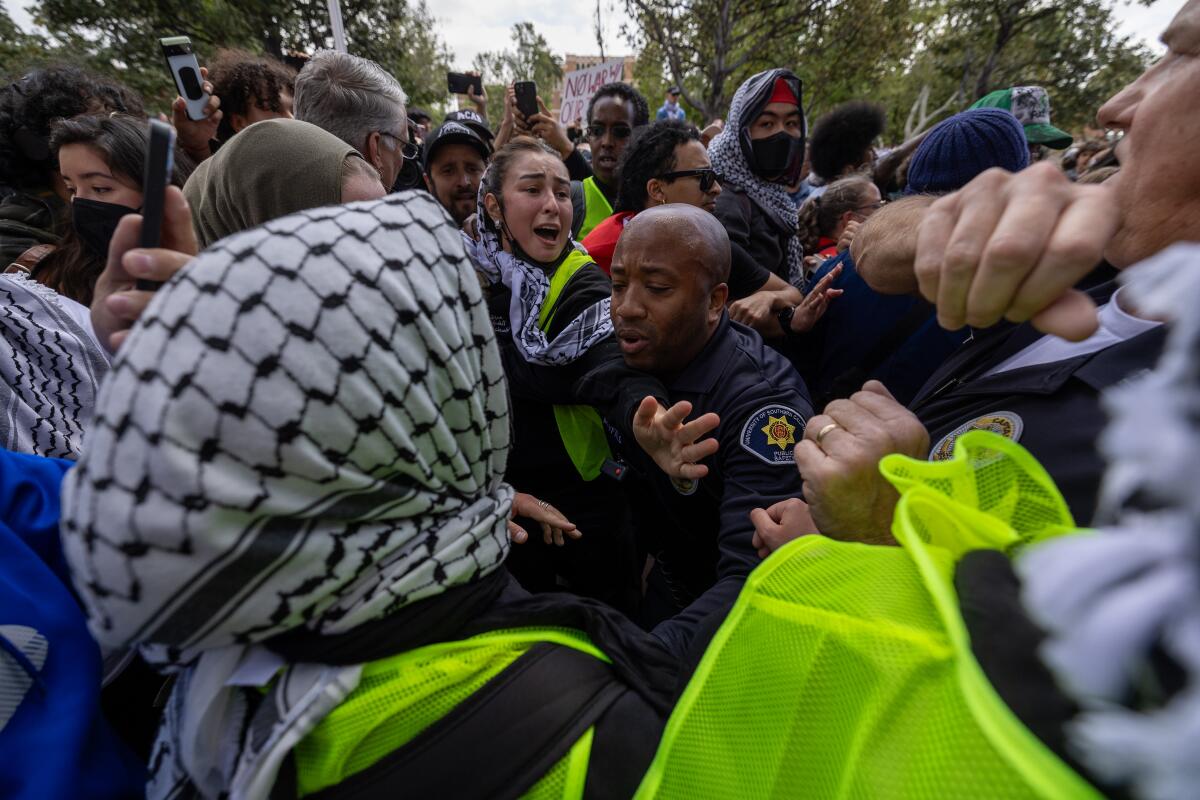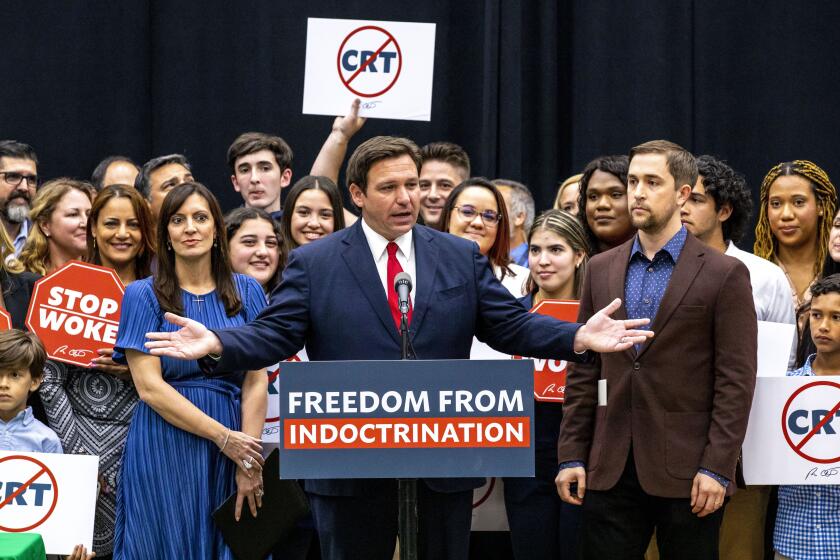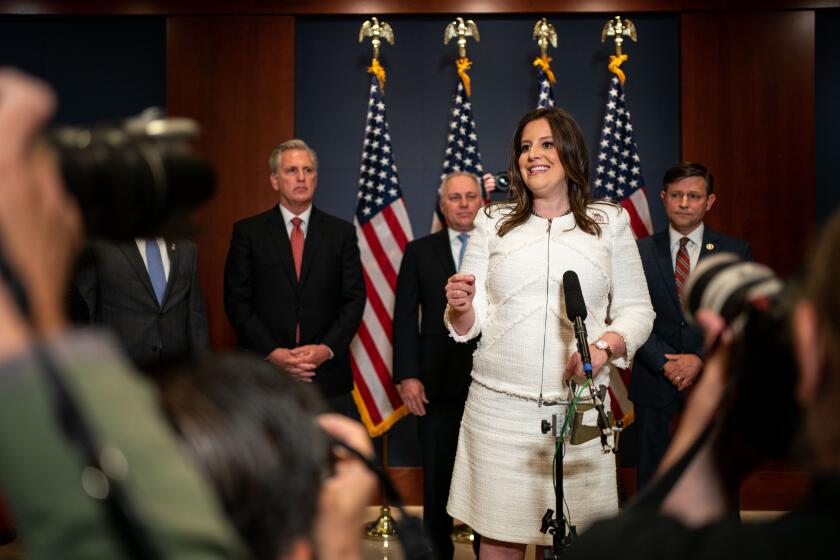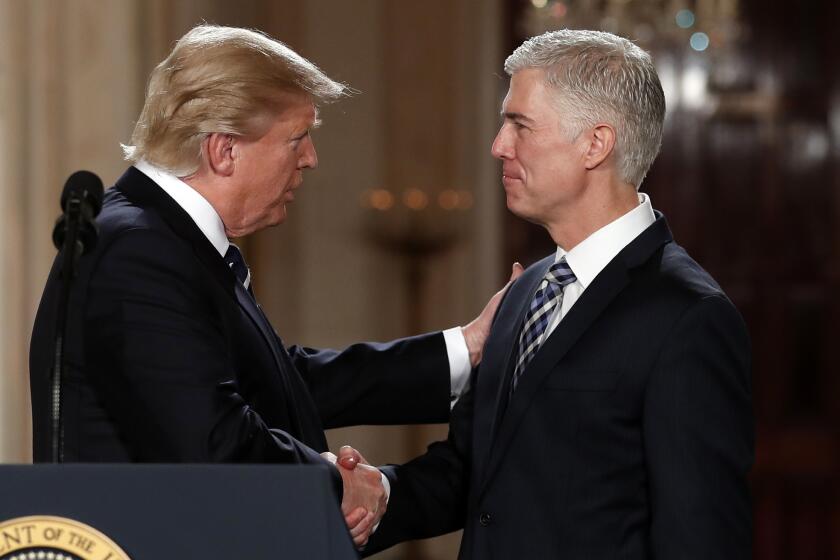Column: Calling the police on campus protests shows that college presidents haven’t learned a thing since the 1960s

Students are massed peacefully on campus, making politically charged demands on university presidents. The police are summoned, leading to mass arrests and even to violence — and to the collapse of confidence in the administration.
You may see the punchline coming: This picture isn’t drawn from USC and Columbia University of the present day, but Berkeley in 1964.
The lessons should be obvious. Bringing police onto a college campus on the pretext of preserving or restoring “order” invariably makes things worse. It’s almost always inspired not by conditions on campus, but by partisan pressure on university administrators to act. Often it results in the ouster of the university presidents who condoned the police incursions, and sometimes even in the departure of the politicians whose fingerprints were on the orders.
Arresting peaceful protestors is also likely to escalate, not calm, the tensions on campus — as events of the past week have made abundantly clear.
— American Civil Liberties Union
In other words, nobody wins.
Perhaps in recognition of the astonishing ignorance of college administrators of their own responsibilities, the American Civil Liberties Union last week issued a succinct guide on how to fulfill their “legal obligations to combat discrimination and ... maintain order” without sacrificing the “principles of academic freedom and free speech that are core to the educational mission.”
Get the latest from Michael Hiltzik
Commentary on economics and more from a Pulitzer Prize winner.
You may occasionally receive promotional content from the Los Angeles Times.
The ACLU advises that administrators “must not single out particular viewpoints — however offensive they may be to some members of the community — for censorship, discipline, or disproportionate punishment.”
It’s one thing for protesters or anyone else to direct harassment “at individuals because of their race, ethnicity, or religion,” the ACLU observed. But “general calls for a Palestinian state ‘from the river to the sea,’ or defenses of Israel’s assault on Gaza, even if many listeners find these messages deeply offensive, cannot be prohibited or punished by a university that respects free speech principles.”
The statement further advised that “speech that is not targeted at an individual or individuals because of their ethnicity or national origin but merely expresses impassioned views about Israel or Palestine is not discrimination and should be protected.” (Emphasis in the original.)
The ACLU cautions that “inviting armed police into a campus protest environment, even a volatile one, can create unacceptable risks for all students and staff.” Its statement points to the history of excessive force wielded by law enforcement units against “communities of color, including Black, Brown, and immigrant students.... Arresting peaceful protestors is also likely to escalate, not calm, the tensions on campus — as events of the past week have made abundantly clear.”
Did Claudine Gay resign from Harvard because of plagiarism or her bad answer about antisemitism? Neither — it was the outcome of a right-wing attack on higher education nationwide.
Finally, the statement urges administrators to “resist the pressures placed on them by politicians seeking to exploit campus tensions to advance their own notoriety or partisan agendas.... Universities must stand up to such intimidation, and defend the principles of academic freedom so essential to their integrity and mission.”
The history of campus protests suggests that they generally appear more threatening and disruptive on the spot than they prove to be over time. Strong, “decisive” responses almost always backfire.
Any university administrator contemplating bringing police onto campus must reckon with what happened at Columbia in 1968, when 1,000 New York police summoned to clear student protesters out of the administration building made 700 arrests amid a melee that resulted in injuries of students and police officers alike.
Then there’s Kent State, where Ohio National Guard troops fired on a crowd in 1970, killing four students and wounding nine others, producing images of the confrontation that remain indelible today.
That brings us back to Berkeley. The free speech movement that originated at Berkeley in 1964 culminated in the student takeover of Sproul Hall on Dec. 2, following a speech by student leader Mario Savio in which he said, “There is a time when the operation of the machine becomes so odious, makes you so sick at heart, that you can’t take part.”
When UC President Clark Kerr failed to take action, Gov. Edmund G. “Pat” Brown stepped in, ordering police to clear the building. This resulted in 773 arrests, the largest mass arrest in California history.
Brown plainly was reacting to pressure from conservatives, who would come to include Ronald Reagan, who based his 1966 campaign for governor on sniping about “the mess at Berkeley.” Reagan beat Brown in a landslide, and subsequently orchestrated Kerr’s firing.
The wisdom of avoiding confrontations between law enforcement and campus protesters was lost on Linda Katehi, then-chancellor of UC Davis, who in 2011 allowed campus police to clear an encampment linked to the Occupy movement, which protested economic inequality.
A video of a campus officer casually pepper-spraying students seated on the Davis quad went viral; Katehi never fully regained her standing on campus and lost her chancellorship in 2016.
Judging from the responses to the Gaza-related protests on its campuses, UC itself seems to have absorbed the lessons of the past. Pro-Palestinian protests at UCLA, UC Berkeley and UC Santa Barbara have been tolerated by their administrations, as my colleague Teresa Watanabe has reported, and to date haven’t resulted in confrontations with law enforcement.
Republicans use ‘socialism’ to denigrate policies that help working Americans, regardless of their relationship to actual socialism.
That may be the product of the 2011 episode, which yielded a systemwide review and report outlining best practices for dealing with campus protests. The report called for “a substantial shift away from a mindset that has been focused primarily on the maintenance of order and adherence to rules and regulations to a more open and communicative attitude,” with police force used as the very last resort.
That’s not the case at Columbia, USC or some other universities where police have been deployed almost as the first resort. At USC, police in riot gear made 93 arrests April 24 in clearing a protest encampment.
The university has failed to get its arms around the protests; its missteps began with its cancellation of a commencement speech by its valedictorian, Asna Tabassum, a Muslim, over unidentified “threats.” Since then, the university has doubled down by canceling its main commencement ceremony. Numerous speakers tapped for keynote speeches at other academic commencements have canceled their appearances.
Some university leaders may be trying to demonstrate a strong hand in managing their campuses, but the message they communicate is the opposite. “They look weak, they look mostly like they are appeasing hostile outsiders who have no intention of being appeased,” Timothy Burke, a professor of history at Swarthmore College, has written.
Texas Gov. Greg Abbott, for example, bragged in 2019 of signing “a law protecting free speech on college campuses.” But he responded to an encampment at the University of Texas by saying the demonstrators “belong in jail” and “should be expelled,” an indication that his devotion to free speech is selective. State and local police raided the encampment, arresting 57.
If the history of appeasement doesn’t sufficiently teach that appeasement never works, the actions of today’s cynical goons such as Abbott, Rep. Elise Stefanik (R-N.Y.) and House Speaker Mike Johnson (R-La.) demonstrate that they aren’t in this game to be appeased.
Justice Gorsuch joins the push for ‘civility’ in debate, which is always aimed at shutting down debate
They don’t care a hoot about the “safety” of students, or about the rise of antisemitism nationally, or about hurtful rhetoric emanating from the tent colonies on campus, which they claim to be their concerns. Instead, they’re trying to exploit what appears to be a violent situation to pursue their larger campaign to demonize higher education — in fact, education generally — by softening it up for the imposition of right-wing, reactionary ideologies.
One would hope that this message hit Columbia President Minouche Shafik squarely after she staged a show of forcefulness April 18 by calling on the New York Police Department to clear an encampment on that campus’ central lawn; officers in riot gear arrested 100 individuals. That came the day after Shafik faced a lengthy grilling by Stefanik and other Republicans on a House committee about reported antisemitic incidents on and around the Manhattan campus. (Disclosure: I hold a Columbia graduate degree.)
Shafik’s appeasement was unavailing. Three days after the police incursion, Stefanik called on Shafik to “immediately resign” for having “lost control” of the campus. Speaker Johnson followed up three days later by visiting Columbia and also calling on Shafik to resign “if she cannot immediately bring order to this chaos.”
Shafik is still trying to show a strong hand. Columbia’s efforts to clear the encampment occupying a corner of its campus lawn has been excessively punitive: Students who have been suspended in connection with the encampment have been barred from campus facilities, including its libraries, classrooms and the common spaces of their dorm rooms.
Monday, participants in the protest were given until 2 p.m. to clear out and identify themselves to campus police, on pain of suspension that would prevent them from taking final exams or graduating, if they were scheduled to do so this year.
The politicians issued their calls for action after fostering the impression that the campus protests are violent. In the case of Columbia and USC, this is largely a fiction. The Columbia encampment was “fairly calm” and reports that Jewish students feared for their safety were “ridiculous,” Milène Klein, a Columbia senior and member of the opinion page board of the Daily Spectator, the campus newspaper, told Slate.com on April 22.
The police presence was what created the tension, Klein said. “We have prison buses around campus, and an egregious amount of police officers off and on campus,” she said. “The presence has been very overwhelming.”
As my colleague Lorraine Ali points out, media coverage of the campus demonstrations and the official responses has tended to erase the goal of the protesters, which is to focus attention on the carnage in Gaza.
But that’s only one casualty of the misdirected coverage. Another is the conflation of anti-Israel sentiment with antisemitism. These are not the same thing. To many people appalled by the situation in Gaza — including many American Jews and even Israelis — the issue isn’t Israel as such or Jewishness but the behavior of the Israeli government, or more specifically the Netanyahu regime.
The participants in the tent protests on campus include many Jewish students who see the issues a lot more clearly than the politicians or the media. That won’t change as long as university administrators forget why their institutions exist — to defend academic freedom and free speech. The effort may not always be easy, but it’s most important when it’s hard.
More to Read
Get the latest from Michael Hiltzik
Commentary on economics and more from a Pulitzer Prize winner.
You may occasionally receive promotional content from the Los Angeles Times.














